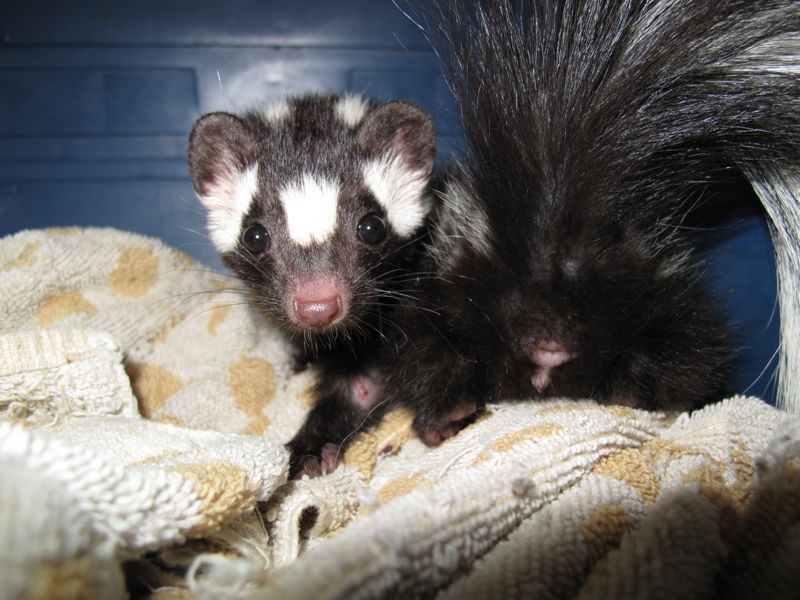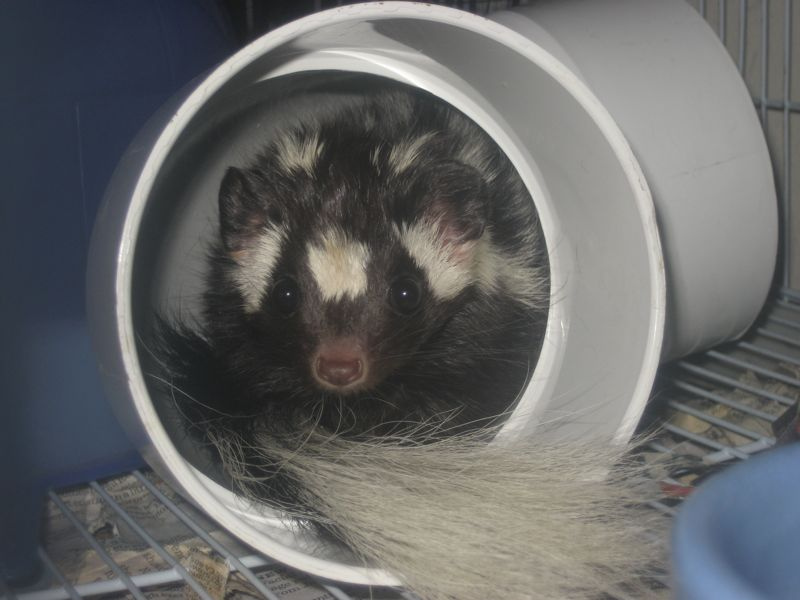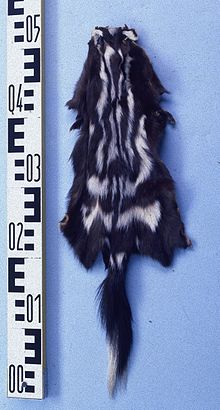Interactions and Nutrition
Spilogale putorius is known as one of the
smallest omnivores in the United States. Most of its
interactions with other species include predation. It is
either eating something else, or another organism is
trying to eat it. Among the multiple genuses of skunks,
the genus Spilogale has been found to have the longest
carnassial, the teeth towards the back of the mouth,
next to the molars. This observation greatly supports
the theory of the animal’s main predatory habits (Medellin
et al. 1998). 
The spotted skunk is an opportunistic feeder, in which it would prefer to eat insects, such as the walking beetle, mosquitos, and fireflies, but will eat many other organisms that are available, plants and other animals alike (ADW 2002). Some organisms that Spilogale putorius has been know to eat include other small mammals such as the Woodrat, red cockaded woodpeckers, frogs, fruit, and vegetables (ADW 2002 and Lesmeister et al. 2013). The gut of the spotted skunk is complex in nature and includes adaptations for digesting not only plant material, but also other animal material, such as the guts of many mammals do.

When a skunk feels as though it is being attacked, it
puts one of its greatest attributes into action. The
skunk has the ability to spray a foul muck out of its
hind end by lifting its tail and releasing the glands
holding the terrible smell. This odor drives others away
from it, and can be smelled for miles around. In extreme
cases, this muck can be sprayed 4-5 meters (Bradley
1997 and ADW 2002). Predators
of the skunk are warned of this coming attack by a
series of hand stands that the spotted skunk will
perform as a sort of prelude to their release. Some
predators of the spotted skunk include those of
aviation, mainly great horned owls, as well as
foxes,
and coyotes (Bradley
1997 and Lesmeister et al. 2010). Though, not in a
necessarily predatory interaction, the Spotted Skunk can
come into contact with, and compete with the
Pocket Gopher in regions on similiar habitats.

One of the spotted skunk’s greatest interactions with
organisms in the living world has been that with humans.
The pelts of the fur on the spotted skunk was a
treasured commodity and sold in market places all around
the United States, as it still is today. As the number
of skunks began to diminish because of the harvesting
that was taking place in the mid 1900’s, the price for a
pelt continued to rise (Gompper
and Hackett 2005). The higher selling prices only
made the hunting for these little critters more intense.
These interactions have also played a huge, and arguably
the most influential effect on the decline of this
species as a whole. Human pesticides use has diminished
the environments in which spotted skunks are able to
thrive. Synthetic materials interact with all systems of
the spotted skunks make up and cause great
complications, consequences that are known little at
this time, but will continue to be able to be seen as
the use of pesticides grows every year (Gompper
and Hackett 2005).
As evident, Spilogale putorius plays numerous
roles in the food web of life. Some organisms eat it,
while it alone devours organisms as well.
Don't miss out on the Interesting Facts up next!
May also be helpful: